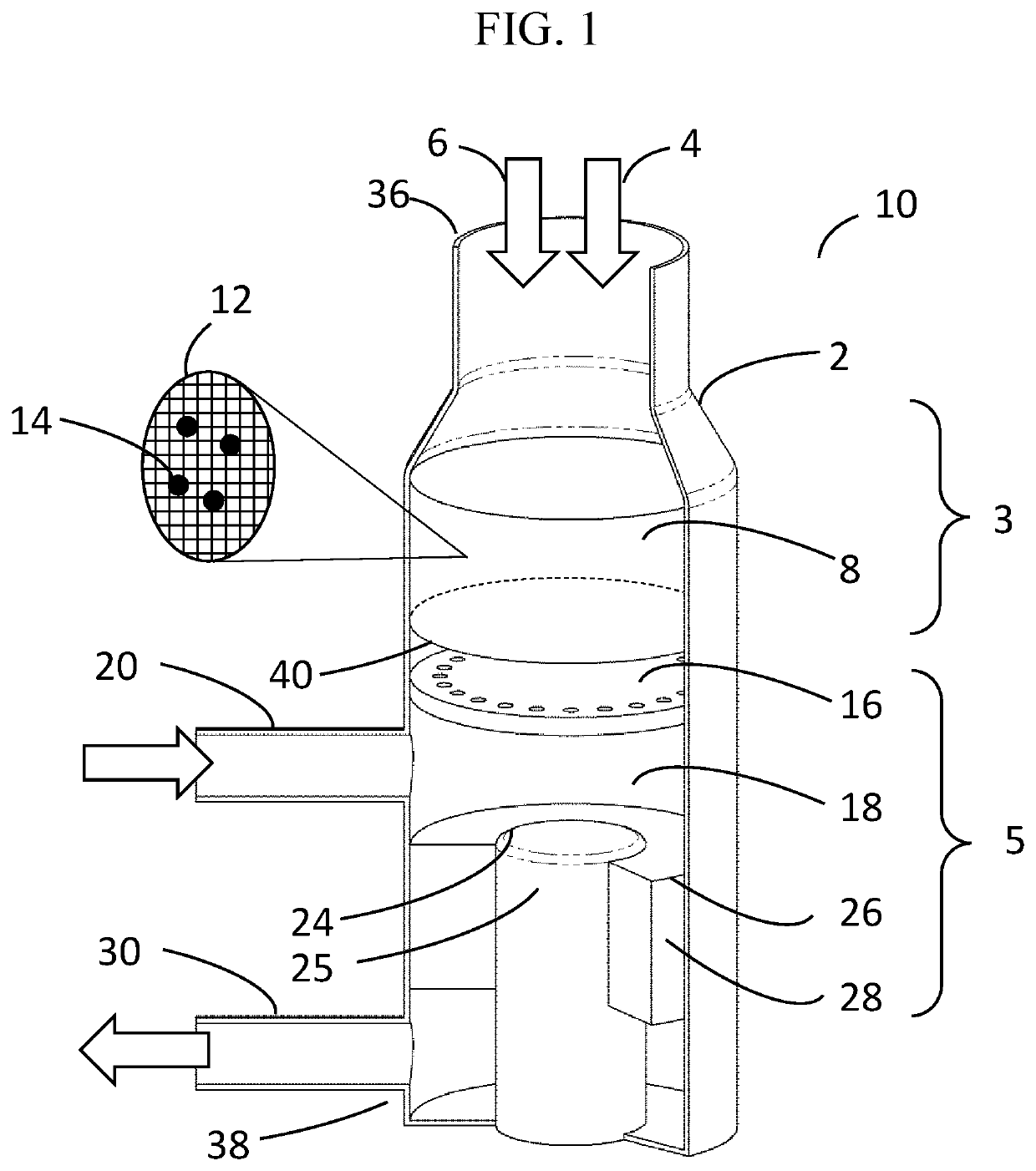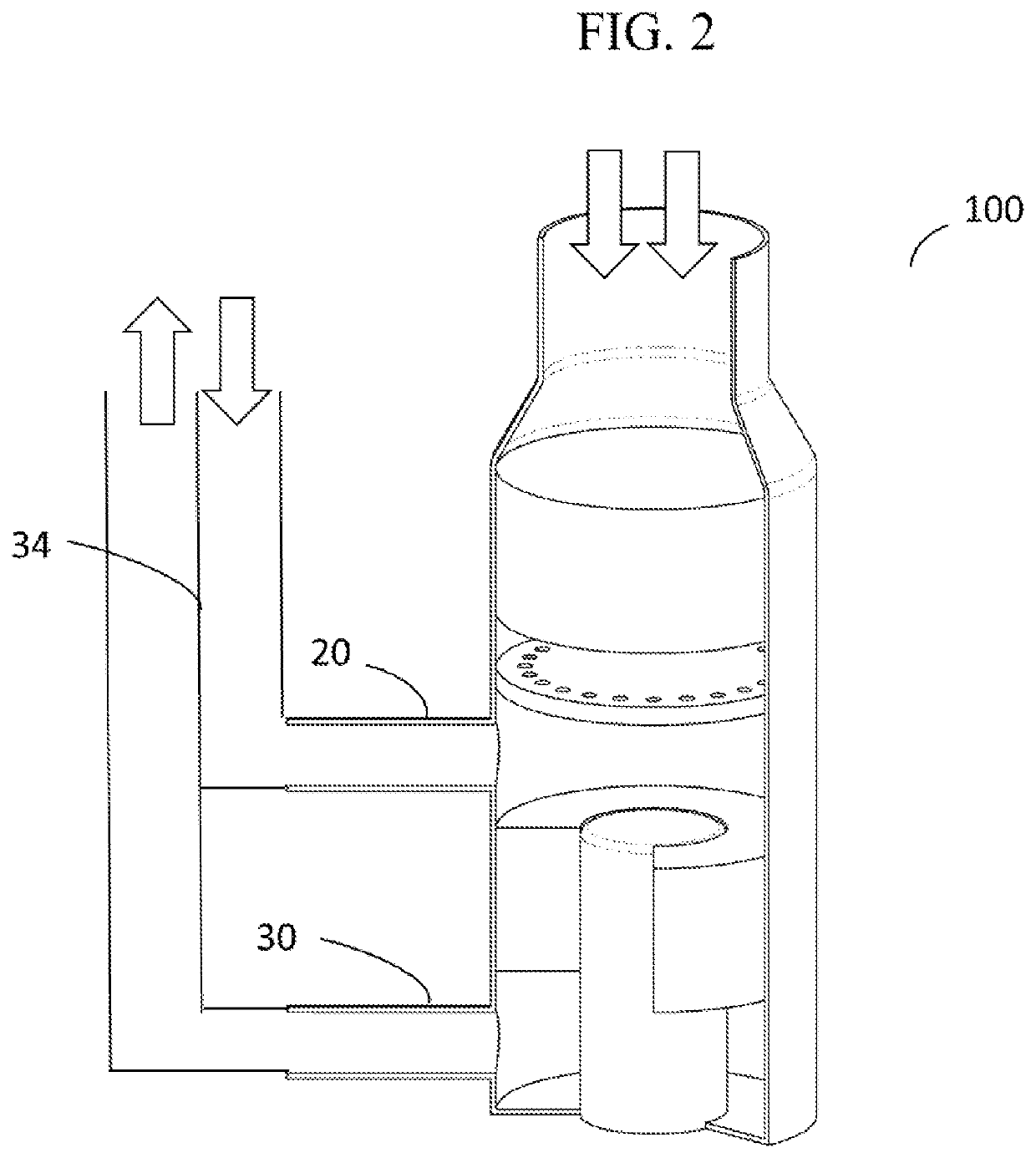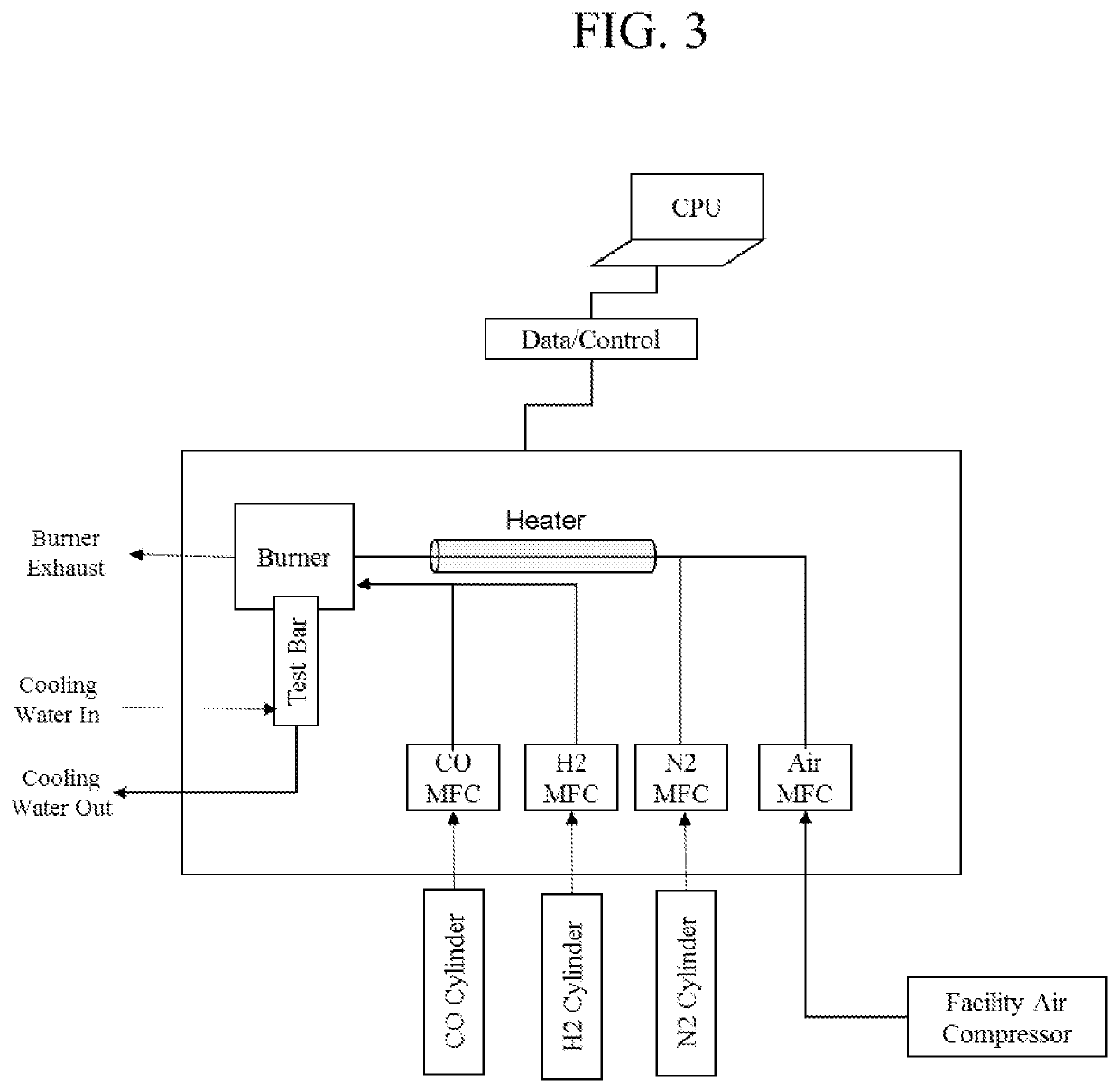Two-stage combustor
a combustor and two-stage technology, applied in lighting and heating apparatus, combustion types, combustion using catalytic materials, etc., can solve the problems of less efficient and fragile heat transfer to a downstream application, excessive flame temperature exceeding 1,200° c, and high temperature of most metallic materials of construction, so as to reduce the amount of undesirable emissions, reduce the amount of volatilization, and reduce the effect of catalyst durability and longevity
- Summary
- Abstract
- Description
- Claims
- Application Information
AI Technical Summary
Benefits of technology
Problems solved by technology
Method used
Image
Examples
embodiments
Example 1
[0071]An apparatus was constructed to test the efficiency of combustion and heat transfer from the deep oxidation reactor component of the instant apparatus invention to a heat acceptor simulating a heater head of a Stirling engine. With reference to the process schematic of FIG. 3, pressurized cylinders of carbon monoxide (CO) and hydrogen (H2) were connected to mass flow controllers (MFC) that metered quantities of CO and H2, respectively, into an inlet line, which fed the resulting mixture into a deep oxidation reactor (burner). The feed mixture of CO and H2 simulated a synthesis gas obtained from a POX reactor. The deep oxidation reactor / burner had disposed therein a porous foam matrix heat spreader (Metpore® brand iron-chromium alloy, SELEE Corp., density 15 percent) provided in the shape of an annulus (36 mm inner dia., 70 mm outer dia., 13 mm length). Pressurized cylinders of nitrogen (N2) and air were hooked up to mass flow controllers (MFC). A metered mixture of N2...
example 2
[0073]A full scale two-stage combustor was constructed and tested in accordance with this invention. The combustor featured all components of the design illustrated in FIG. 1, including the heat recuperation design shown in FIG. 2. The constructed apparatus included a housing 2 having disposed therein: a Stage 1 catalytic POX reactor 3 comprised of a fuel inlet 4 for inputting natural gas, an oxidant inlet 6 for inputting air, a partial oxidation reaction zone 8 comprising a MICROLITH brand ultra-short-channel-length metal substrate 12 having a rhodium catalyst 14 supported thereon (Precision Combustion, Inc.), and a partial oxidation reactor outlet 40; and a Stage 2 deep oxidation reactor 5 comprising a premixer plenum 18 fluidly connected to the partial oxidation reactor outlet 40, the plenum 18 having disposed therein an open-celled metal foam matrix (Metpore® brand FeCrAlY iron-chromium alloy, 100 ppi, SELEE Corp.) (not illustrated). Downstream of the premixer plenum 18 was disp...
PUM
 Login to View More
Login to View More Abstract
Description
Claims
Application Information
 Login to View More
Login to View More - R&D
- Intellectual Property
- Life Sciences
- Materials
- Tech Scout
- Unparalleled Data Quality
- Higher Quality Content
- 60% Fewer Hallucinations
Browse by: Latest US Patents, China's latest patents, Technical Efficacy Thesaurus, Application Domain, Technology Topic, Popular Technical Reports.
© 2025 PatSnap. All rights reserved.Legal|Privacy policy|Modern Slavery Act Transparency Statement|Sitemap|About US| Contact US: help@patsnap.com



